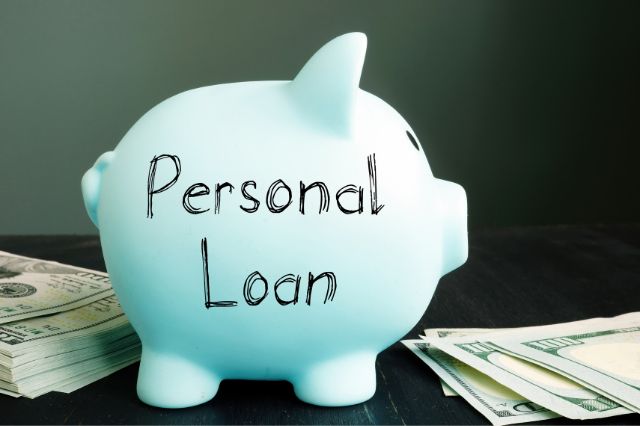Whether you’re looking to make a major purchase, consolidate debt, or take a vacation, getting a personal loan can help you finance your goals.
But the process of obtaining a personal loan can be intimidating and confusing.
To ensure that you get the best terms and rates available, it is important to understand the steps involved in applying for and obtaining a personal loan.
Knowing the steps you need to take in order to get a personal loan is essential for saving time and money.
This step-by-step guide will provide helpful information on how to go about applying for a personal loan and how to make sure it is the right choice for you.
7 Simple to Get a Personal Loan
If you need money for a large purchase or an unexpected expense, a personal loan can be a useful financial tool. Here is a step-by-step guide to obtaining a personal loan:
Step 1: Determine Your Credit Score
Credit score is the vital factors lenders consider when deciding whether to approve your loan application.
Various credit reporting agencies will provide you with your credit score for free. You should work on improving the credit score before applying for a loan.
Step 2: Figure Out How Much You Need
You must first determine how much money you need to borrow before applying for a loan.
Late payments can negatively affect credit scores, so take loan what you can afford to repay.
Step 3: Look for Lenders
Personal loans are available from a variety of lenders, including banks, credit unions, online lenders, and peer-to-peer lenders.
Investigate various lenders to find the best interest rates and loan terms for your requirements.
Step 4: Compile Your Documentation
Documentation will be required by lenders to verify your identity, income, and other financial information.
This could include government-issued identification, pay stubs, tax returns, and bank statements.
Step 5: Complete and Submit Your Application
You can submit your loan application once you’ve chosen a lender and gathered all of your documentation.
This is typically done online or in person at a bank or credit union..
Step 6: Examine Loan Offers
The lender will send you an offer of a loan if you have been approved for a loan, outlining the interest rate and monthly payments.
Before accepting the loan, carefully review these documents.
Step 7: Get the Money
If you accept the loan offer, the funds will usually be deposited directly into your bank account.
To avoid damaging your credit score, use the funds responsibly and make your loan payments on time.
Where You Can Get a Personal Loan in 2023
The easiest way to get a personal loan is to start by researching online lenders.
Many online lenders offer competitive rates and flexible repayment options, making them an attractive option for personal loans.
Additionally, many online lenders have streamlined their application process, so you can often get approved quickly and receive your funds the same day or within a few days.
It’s crucial to shop around and evaluate various lenders to find the best loan conditions for your circumstances.
Ensure you understand all the terms and conditions before signing any loan agreement.
It’s also a good idea to read reviews from other customers who have used the lender in the past. You can use this information to decide which lender is best for you.
However, if you have good credit, it may be worth considering traditional banks or credit unions for your personal loan needs.
These institutions often offer lower interest rates than online lenders, so they may be a better option if you qualify.
How Does a Bank Provide a Personal Loan?
A bank provides a personal loan by assessing an individual’s creditworthiness and financial situation.
The bank will review the potential borrower’s income, debt, credit score, and other factors to determine if they are eligible for a loan and what terms should be offered.
If approved, the borrower will receive a lump sum of money that is typically paid back over time with interest.
A bank’s personal loan application process usually involves filling out an online form or visiting a branch in person.
The applicant must provide proof of their income and other documents, such as tax returns or pay stubs, to demonstrate their ability to repay the loan.
Banks may also ask for additional information, such as the purpose of the loan and collateral that can be used as security.
Once all documents have been submitted, the bank will review them and make a decision on whether or not to approve the loan.
Summary
If you need money for a large purchase or an unexpected expense, getting a personal loan can be a wise financial decision.
Follow the instructions in this guide to increase your chances of getting a loan with favorable terms and rates.
Remember to always borrow responsibly and only take out what you can afford to repay.
If you have any further questions or tips on how to get a personal loan, feel free to leave a comment below.
Your feedback can help others make informed decisions about their personal finances. So, please consider writing a comment. Thank you!






